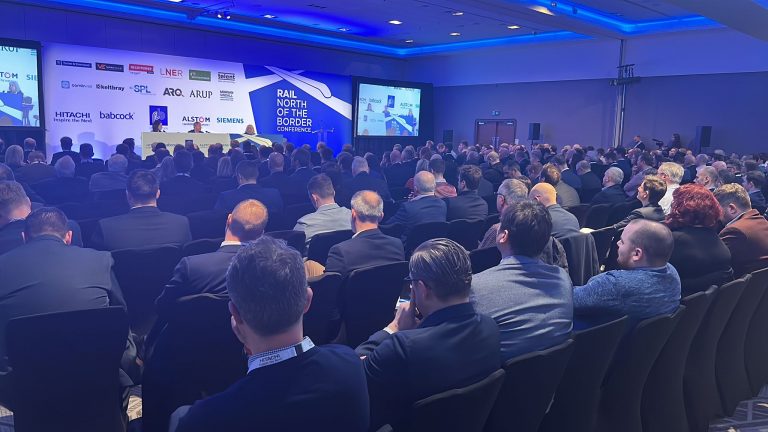After Peloton Events hosted the annual Rail North of the Border Conference in Scotland, Quadrant Transport highlights the key takeaways from the morning sessions.
The maximum capacity event was introduced to speakers from Scotland’s railway industry, including Jenny Gilruth MSP and Alex Hynes, Managing Director of Scotland’s Railway.
Addressing the audience in a passionate speech about the shape of the rail sector in Scotland post-pandemic, Jenny said: “The pandemic has allowed us to do things differently, to refocus our energy and create something better for our environment and our economy.”
Passengers returning to rail has been incrementally increasing since the easing of restrictions across Scotland. The key difference, however, is the patterns of travel on the network.
Jenny acknowledged this, stating: “As a society and as an economy, we have changed, with different working practices and different leisure needs.”
Adapting to changing patterns will help the industry get ahead of the curve
These comments were well received by all attendees as she made clear despite a change in travel behaviours, “We need to be welcoming passengers back with reliable and efficient services to meet their new needs.”
Before the pandemic, peak-time commuter services were the busiest on the network. Now, the weekend services show the strongest demand with more people continuing to work from home.
Whether this is how the timetable operates, the way we sell tickets, the way we maintain the track, we need to modernise our railway to reduce the cost of railways
Alongside passenger revenue issues, the discussion of the Decarbonisation Action Plan dominated the speech. The rounded approach of electrification, freight, economic growth and plugging the skills gap was all high on the agenda.
Rounding up her captivating address, Jenny outlined her commitment to the rail sector: “my responsibility over the next coming weeks and months is the smooth transition of passengers and staff, as we move into public ownership from April. We only have 28 days to ensure we have that seamless transition.”
Five-step plan to measure success in Scotland
Alex Hynes kept his message to the industry clear and concise. A five-point action plan to measure the success of Scotland’s rail network by the end of 2022.
These included the need for a continuation of service in the face of Covid and the need to deliver a smooth transition to the new operator. He stated: “We are looking forward to working with Scottish Rail Holdings and the new owners of ScotRail on delivering a railway for Scotland.”
Moving on, he also explained that above all else, track safety is the most essential aspect of delivering rail in Scotland.
We’ve got to make sure that as we navigate climate change, we continue to run safe railway for passengers, the public and the workforce
In a thought-provoking segment, Alex discussed the intertwining issue of net zero and costs. Yesterday, rail revenue was 45% lower than two years ago.
Alex addressed this and added: “No business can tolerate a 45% reduction in income and not think about the way it runs the business. We have to reduce the net cost of the railway. At the moment, the amount of money that the government is putting into the network is unsustainable.
Plenty of debate happened in the panel discussions
After these stimulating speeches, we moved on to the panel discussion, allowing the audience to interact with our special guests.
The leading question was about taking advantage of the reset in the rail industry and how the sector can become leaders in transport decarbonisation.
Catherine Hall, Head of Strategic Planning at Network Rail, tackled the question first. “We focus a lot of attention solely around the rail journey but in reality, people walk, drive or take the bus to the station.
Continuing, she explained: “If we are going to deliver decarbonisation, we need to con”sider the system this feeds into and how people get door to door. If we only concentrate on the bits that we do and don’t collaborate with the other modes, then we will miss the opportunity for people to choose rail as part of their journey.”
Everyone in this room has a proud record of delivering electrification in this country at reasonable;e prices, which enable us to roll out fantastic trains such as Hitachi
This was widely received by the audience and Andrew Went, Director at Arup agreed. He added how this also needs to be considered with freight delivery. “We talk a lot about freight and it is good to see the percentage rate coming into rail going up.”
“We need to think about how does the freight move from the depot to the destination. People are changing how they shop with the online market increasing through the pandemic. We need to react to this and what it means for the freight sector.”
As the conversation continued throughout the rest of the debate, the message was clear. The industry has come far in the last decade but there is still a long way to go to fully build the infrastructure that is needed to ensure that rail thrives.

